Traditional Culture Given a Modern Twist
New enthusiasm revitalizes time-honored brands
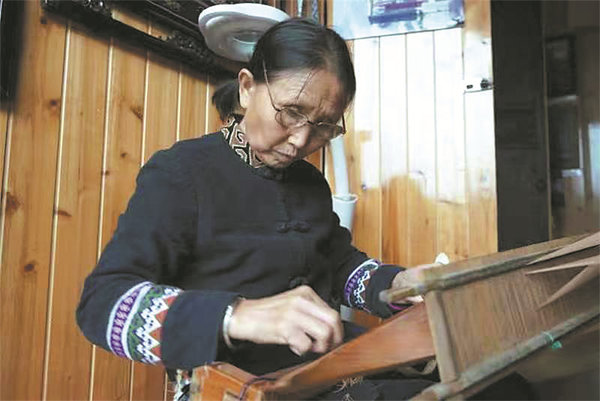 |
| Liu Dai'e practices the traditional craft of Tujia brocade weaving in her home village in Longshan County, Hunan Province. [Photo/China Daily] |
Liu Dai'e completed dozens of orders for her handmade scarves and shawls bearing distinctive cultural elements of the Tujia ethnic group in time for Spring Festival, which falls on Saturday.
Born and raised in a village in Hunan Province, Liu has introduced over the past two years a new technique to the traditional craft of Tujia brocade weaving, which in 2006 was named as a national intangible cultural heritage.
"Many of my customers like to wear these scarves and shawls for Spring Festival, or send them to their families and friends as gifts," said Liu, whose village is situated in Miao'ertan Town, Longshan County.
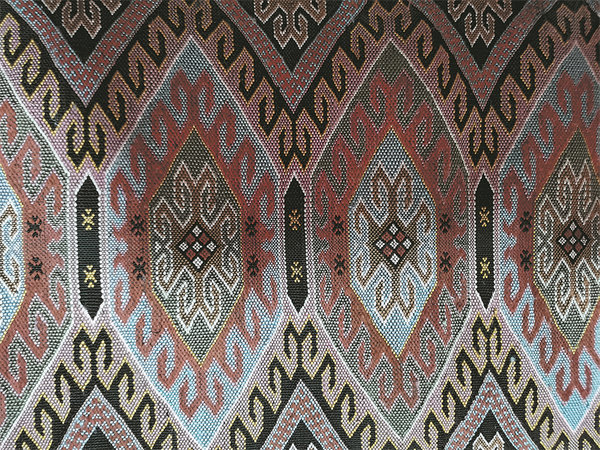 |
| Tujia brocade woven by Liu Dai'e [Photo/China Daily] |
In the Tujia language, the local brocade is known as xilankapu, which translates as "flower-patterned cover". Made by skilled weavers and involving more than 10 processes, including spinning, threading, knotting and rolling, Tujia brocade features over 200 classic designs.
Liu, who is in her 60s, said: "Only one side of these traditional products is woven with patterns, while the other side is left rough. It took me six to seven years to master the technique of presenting distinctive Tujia elements on both sides to my complete satisfaction."
Named a national inheritor of the craft in 2007, Liu said, "Handwork is involved throughout the process, and to produce designs that are more delicate than others, I use one shuttle line, instead of two."
This is just one example of the innovative techniques Liu has used throughout her more than five decades of working with this traditional craft, which she started to practice with her grandmother.
In 1986, Liu launched a Tujia brocade business with her sisters.
"At that time, many people were struggling to make a living, and I wanted to use my skills to help them improve their lives," Liu said.
She added that she also wanted to promote the brocade, which has helped preserve traditional culture, especially as the Tujia ethnic group does not have its own form of writing.
After launching the business, Liu became acutely aware of the popularity of products featuring traditional designs made from materials such as silk and wool.
She made a point of collecting ancient designs by trekking deep into the mountains that are home to Tujia villagers. "I tried to restore the old and discarded brocade items I bought," Liu said.
As traditional thick Tujia brocade is often used as bedding by members of this group, Liu opts for silk, to achieve a lighter touch. She also uses the brocade to make handbags, and for paintings, which have proved popular with travelers.
With the continuous development of the local culture and tourism industry, Miao'ertan is welcoming more visitors. After talking to a number of people, Liu sensed the way in which the local brocade industry needed to develop, and took it to a high-end customized market.
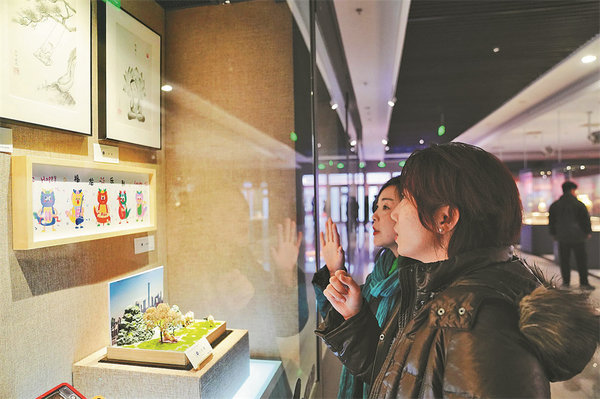 |
| Visitors tour an exhibition of works created under the Yuxun program at the Beijing Arts and Crafts Museum in October. [Photo/China Daily] |
On the 60th anniversary of the founding of Xiangxi Tujia and Miao Autonomous Prefecture in 2017, she led seven apprentices and spent nine months weaving a huge Tujia brocade featuring classic designs such as flowers, birds, heavenly beings, and auspicious symbols. The item is on display at the Xiangxi Intangible Cultural Heritage Museum.
Liu has also woven portraits of her customers into brocade items, which have sold well.
"We need to create high-quality, high-end products to preserve the good things in life. Only in this way can we enhance confidence in ethnic culture and achieve social and economic benefits," she said.
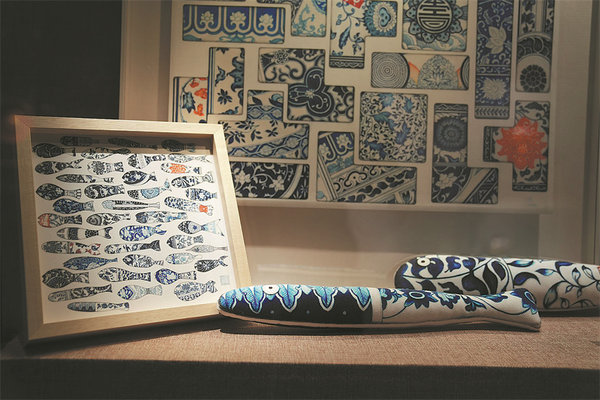 |
| Su has breathed new life into ancient vessel designs. [Photo/China Daily] |
Fresh Designs
In Beijing for the past decade or so, Su Dayou, 41, has breathed new life into traditional designs and decorations with his distinctive artistic presentations.
With a background in animation and painting from the Central Academy of Fine Arts, he uses designs on blue-and-white porcelain for items such as maps and art works. After he graduated from the academy in 2007, like many art students Su mainly worked on oil paintings and sketches. "The more I painted, the more I felt like channeling my own thoughts into my works," he said.
He found his calling in 2010, when he became particularly attracted by abstract designs. "Even road signs can set my imagination buzzing," he said. The image of an ancient enamel jar in a magazine set Su on a quest to find traditional designs.
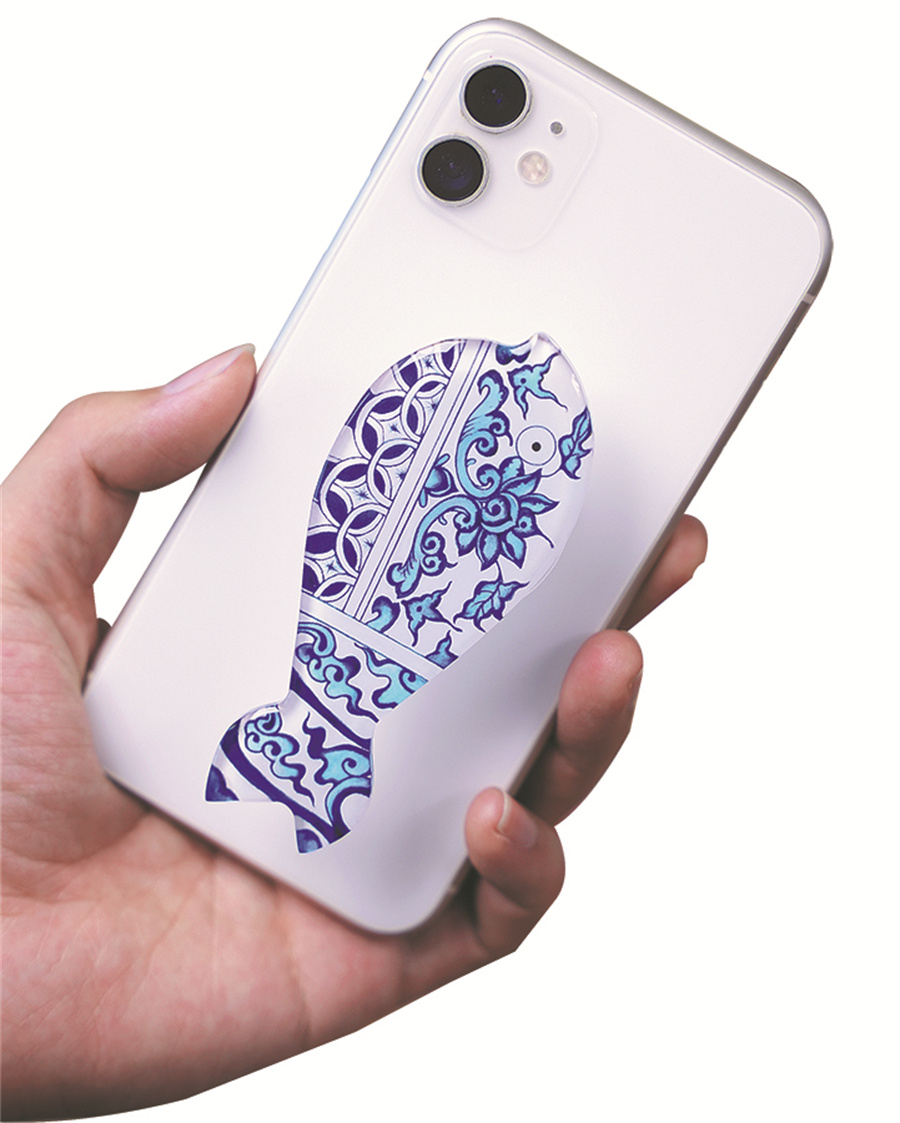 |
| A phone holder, designed by Su Dayou in Beijing, has blue-and-white porcelain designs. [Photo/China Daily] |
"The jar looked robust and featured images of lotus flowers and cranes in its design — all rendered in an exquisite indigo blue," he said.
Su next studied and took note of the designs of various ancient vessels in different styles displayed at museums across Beijing.
"The designs blew my mind, and were extremely detailed — with the work completed in one go by ancient craftsmen," Su said, adding that some designs depicting five dragons require long-term training.
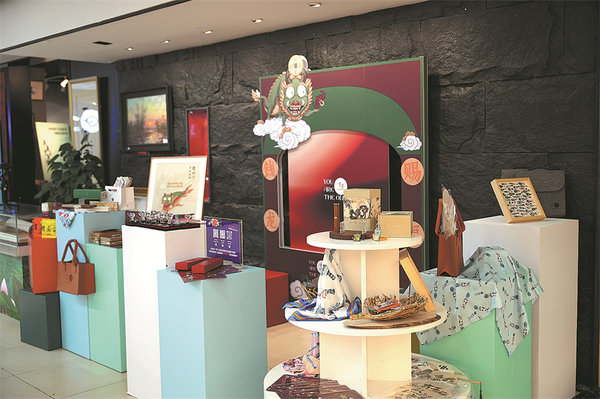 |
| Works created under the Yuxun program on sale at the Gongmei Mansion in Wangfujing shopping area in downtown Beijing. [Photo/China Daily] |
More important, he was intrigued by the abstract nature of the traditional cultural designs. As he saw more of them, he started to sense that he could apply them to modern life through his own creations.
He began by creating a series of stickers and paintings featuring elements of blue-and-white porcelain.
"Those in the forms of a fish and a red cross were particularly popular," said Su, who opened an online store in 2013 to sell his creative cultural items.
He also created a Chinese map with porcelain designs, which attracted considerable attention online.
"This shows that our traditional culture is becoming increasingly popular and that more people are embracing it on a personal level," Su said.
After his innovative use of traditional Chinese cultural elements caught the attention of Beijing Gongmei Group, Su's designs now appear on phone holders and scarves. The company has been involved with the inheritance and development of China's arts and crafts culture for about 70 years.
"Cooperation with the company greatly encouraged me and further motivated me to incorporate more ancient designs with contemporary elements," Su said.
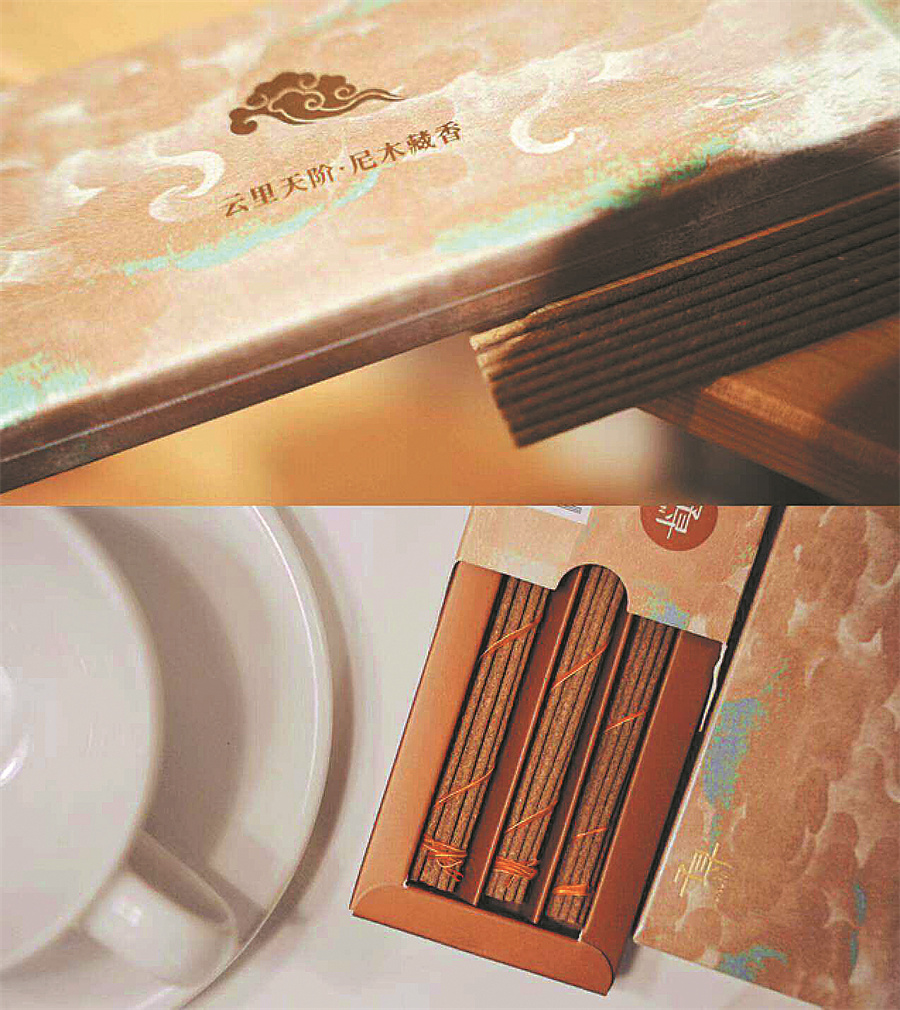 |
| Tibetan incense has proved popular with shoppers. [Photo/China Daily] |
New Enthusiasm
Wang Jingjing, head of Beijing Gongmei Group's operations management department, said traditional Chinese brands have been revitalized in recent years with a new wave of enthusiasm, attracting rising numbers of young customers.
Last year, the company launched the Yuxun program, which focuses on innovative art creations.
The program is aimed at setting up collaborative artistic projects with enterprises, design studios, professional designers, art school faculty and students, as well as individuals passionate about art.
"We aim to come up with brand new interpretations of Chinese intangible cultural heritage," Wang said.
The program has contacted some 300 artists to explore a modern-day conversion of traditional arts and crafts. Partnerships have also been formed with more than 30 artists with expertise in a wide range of traditional fields, including filigree inlay, imperial embroidery, Yi embroidery, and purple clay teapots.
Wang said, "We have discussed ways for traditional crafts to shine in the modern era, and how to market them and make them a brand, such as highlighting the history behind them, as well as their new looks and functions."
The general aim is to produce cross-disciplinary creations and bring more exquisite quality to artworks containing elements of Chinese culture by using new materials.
After a design is agreed upon, production is assigned to craftsmen before the marketing plan is formulated, Wang said.
Some cultural products have been developed as part of the program, with Tibetan incense one of the most popular, she added.
The culture of such incense is particularly important in Tibetan Buddhism and folk beliefs. For example, Nimu Tibetan incense made from cypress wood has a history of more than 1,300 years.
In 2008, the craft of making Tibetan incense was named as a national intangible cultural heritage.
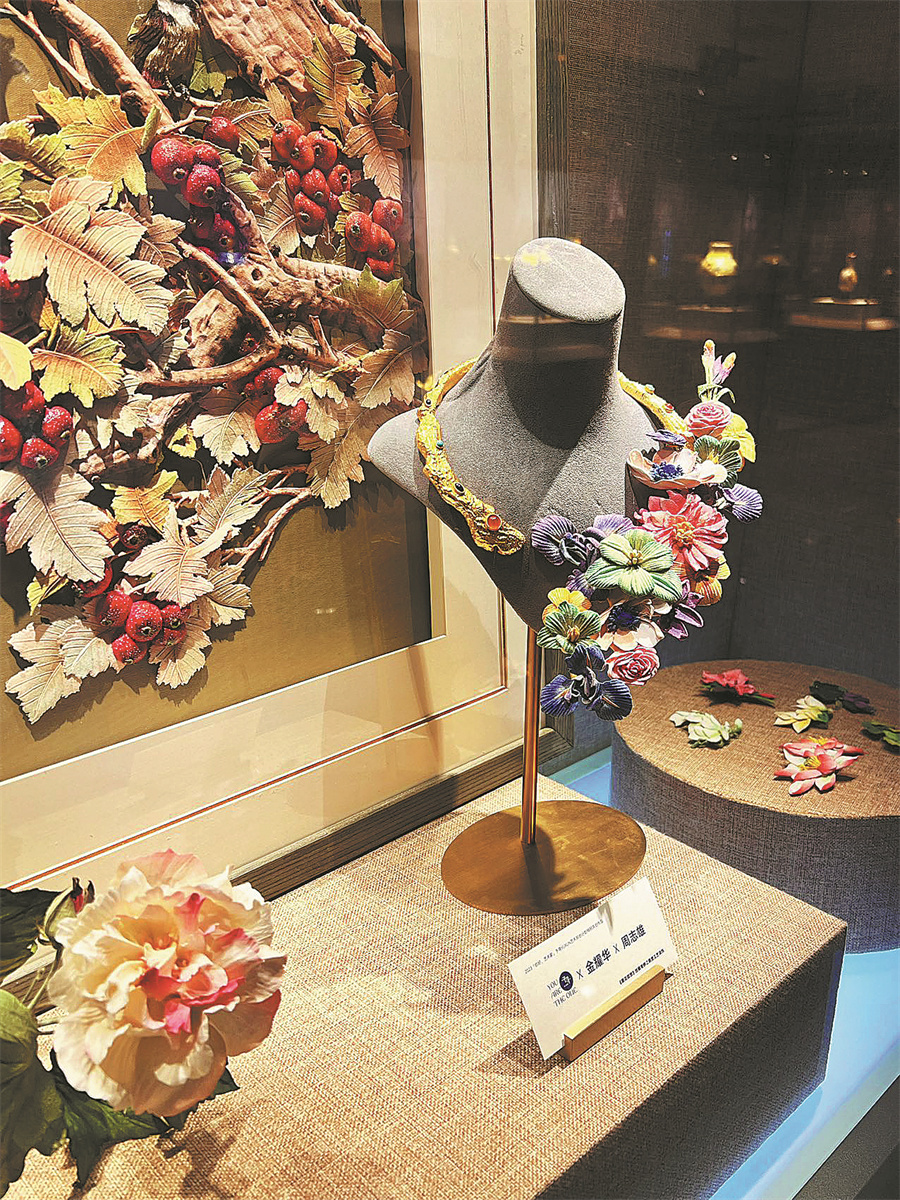 |
| Fashion accessories made with traditional techniques. [Photo/China Daily] |
"We have preserved the intricate and meticulous traditional water milling process, which is all done by local artisans, but have integrated it with a modern incense burner," Wang said.
The burner is portable, and a dozen different types of incense can be placed in it.
"We found that many young consumers are drawn to this delicately designed incense burner to buy products, which in turn could help promote intangible culture," Wang said.
In December, the Yuxun program launched a second creative project that aims to re-create eight imperial handicrafts, including enamel, gold lacquer inlay, and filigree inlay, as well as collections at the Beijing Arts and Crafts Museum.
The program will last for four months and candidates are encouraged to send their artworks for review. The finalists, who will be announced in March, will receive support from the program for further development.
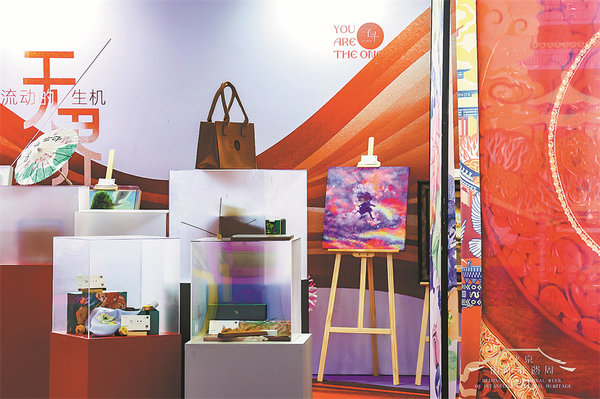 |
| Items made with traditional techniques under the Yuxun program, which was launched by the Beijing Gongmei Group, on display in Beijing in October. [Photo/China Daily] |
"We have managed to revitalize intangible cultural heritage. Now, it's all about branding and adding value," Wang said. "We can surely go further once standardized products with the characteristics of traditional Chinese culture are in place," she said.
Song Junhua, director of Sun Yat-sen University's Institute of Chinese Intangible Cultural Heritage, said such heritage is primarily a dynamic culture, which is key to harnessing its significant modern-day impact.
He has noticed four trends in achieving the potential of intangible cultural heritage through innovation.
"The first is to transition from innovation in intrinsic function to innovation in derived functionality," Song said.
"For example, our Chinese New Year paintings traditionally served the purpose of bringing good luck during Spring Festival. Now, they serve additional functions, such as being used for art collections," he added.
The second trend features innovation from the public, which can be applied to various aspects of life, Song said.
The other two trends are a shift in innovation from the product itself to the entire production process, and integration of the internet, digitalization and virtual reality, he said.
"While preserving intangible cultural heritage, it is also crucial to understand the perceptions of the communities and groups who are the custodians of this heritage," Song said.
"This is an ongoing and dynamic balance. If we can prioritize people's desire for a better life and cater to their needs, we consider such changes to be appropriate."
(Source: China Daily)
Please understand that womenofchina.cn,a non-profit, information-communication website, cannot reach every writer before using articles and images. For copyright issues, please contact us by emailing: website@womenofchina.cn. The articles published and opinions expressed on this website represent the opinions of writers and are not necessarily shared by womenofchina.cn.








.jpg)

 WeChat
WeChat Weibo
Weibo 京公网安备 11010102004314号
京公网安备 11010102004314号